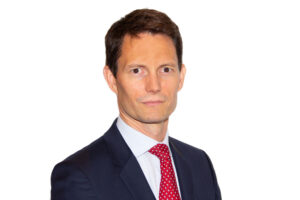Although Monte Carlo convos about reinsurer appetites for U.S. casualty business prompted some flashbacks to the 1980s, reinsurance company executives who spoke after the Rendez-Vous de Septembre said they’re open for both casualty and property business.
There’s one condition, however. For casualty, reinsurers need more visibility into insurers’ claims and underwriting practices aimed at dealing with social inflation, said David Marra, executive vice president and group chief underwriting officer for RenaissanceRe.
Marra was responding to Andy Marcell, chief executive officer of Risk Capital and Risk Solutions at Aon, who asked reinsurance company executives to describe how they are thinking about casualty renewals during a panel discussion hosted by the broker in mid-September. Specifically, Marcell identified the challenge of adverse loss development from prior accident years that U.S. casualty insurers have been dealing with since late last year.
RenRe, a Bermuda reinsurer created soon after Hurricane Andrew with its roots in the property-catastrophe market, today has a portfolio that’s slightly more weighted to casualty and specialty reinsurance. During introductory remarks, Marra told listeners that with RenRe’s acquisition of Validus Re last year, the company now commands a $12 billion portfolio—almost all assumed reinsurance premium that is roughly 40 percent property and 60 percent casualty and specialty.
Addressing Marcell’s question, Marra said, “We haven’t found a cat product or a reserve development product that replaces traditional quota share in covering casualty. And traditional quota share doesn’t have a lot of dials to turn for us to figure out what the clearing price of that risk is, and as a market, [to] set that based on what we’re seeing. So, the way we’d like to engage on casualty is just to be much more transparent about discussions.”
Marra reported that casualty has been through a cycle where more global reinsurance programs were placed rather than programs specific to individual classes of business. While this was efficient for the client, the broker and the reinsurer, what “we lost in the process was that partnership dialogue about what’s really going on in [a] class of business—so the reinsurance underwriter and insurance underwriter and everyone in between could have a meeting of the minds on that.”
“We’d like to get back to where we can be much more engaged with the client,” and specifically with the client’s claims department, about the trends they’re seeing and how they’re navigating them—”because it really is up to the insurers,” Marra continued. Reinsurers “can ask the right questions, but it’s up to the insurers to figure out how to navigate a lot of these tough dynamics. And the dynamics are very real. Social inflation has been with us for a long time,” he said, pointing to a driver of adverse loss development.

“Going forward, I think we need another playbook, which will involve claims settlement practices and underwriting approaches.”
David Marra, RenaissanceRe Holdings
While the tactics insurers have used for five years—reducing limits and increasing rates—were one way to fight social inflation, “going forward, I think we need another playbook, which will involve claims settlement practices and underwriting approaches,” he said.
“Our approach to this renewal is to tee up that dialogue with better data… Start with that. The claims triangles are showing a lot of volatility. We’re seeing claims settling faster. We’re seeing case reserve adequacy probably increasing….The normal process that we follow [to place] a quota share renewal doesn’t give us enough insight to really understand that, and [to] have the next phase of conversations with the client.
“The whole goal is really about [ascertaining] what is the loss cost going to be [in] 2025 and 2026, and how is the insurer going to navigate that so we can differentiate and make sure we put our capacity in the right place and get the right price for each customer.”
Marcell said that Marra isn’t alone in putting out information requests to better understand cedent claims practices, and how those are being incorporated into reserving philosophies and underwriting practices. Still, going into Monte Carlo, Marcell worried. “U.S. casualty is going to be a nightmare,” he thought. “It was going to be back to like 1988, and that was ridiculous,” Marcell said.
“So, I just want to be clear to the clients….I don’t want to put words in your mouth [but] Ren Re is not running from risk in casualty. RenRe is seeking to find the right partners and [to] truly understand the implications of the social inflation so they can manage their portfolio into the future. Is that a fair assessment?” Marcell asked Marra to clarify his understanding.
“Correct,” Marra affirmed. “Depending on what we learn from that, …we may end up finding some places to take some chips off the table. But that’s not the goal. That could just be a potential outcome. We just want to make sure that we’re picking the right loss cost and picking the right partners for the long term.”
More Rate, Less Limit, More Dialogue
Philippe Meyenhofer, CEO of PartnerRe Ltd., offered a similar take from his company’s perspective. “For us, it’s definitely not running away from the risk. It’s a very important risk pool in the market. It’s an important risk pool for us as well.”

“I do think we need to see some changing claims practices….These early settlements can’t just be the industry caving in and just fueling the social inflation that we’ve seen.”
Philippe Meyenhofer, CEO of PartnerRe Ltd.
“We do believe that we have partnered with the right clients in the sense [that they are] people who are going to be eyes wide open about what is going on—because what is going on is profound. And the reactions that we need really, first and foremost, [are] at the insurance level. David said it: [With] quota share, there aren’t that many dials to turn.
“The key here is we continue to see clients really willing to keep pushing, and in fact even accelerating the rate increases that they’re getting—and importantly reducing the limits that they’re deploying because the one thing that we don’t believe is that the loss trend will subside,” he said. In fact, when PartnerRe reviews actual versus estimate loss numbers “what we’ve been continuing to see come through every quarter [is] excessive,” he said, referring to the magnitude of the difference. “So we do need an acceleration.”
“It’s a market issue,” he continued. “The discussion between insurers and reinsurers—that has its place. That’s very important. But it is really a much bigger issue,” Meyenhofer asserted.
Marcell went on to ask the CEO, whose background is in casualty underwriting, whether PartnerRe had particular areas of concern in a vast casualty market that includes umbrella, large excess casualty, D&O and E&O and all things in between. Are there places “where you would ask more questions [or] where you are more comfortable than not in the U.S. casualty?”
“For us, it’s definitely not running away from [casualty] risk. It’s a very important risk pool in the market,” Meyenhofer said.
Confessing that he is not close enough to call out individual segments, Meyenhofer reiterated Marra’s point that many of the quota share reinsurance agreements out in the market now are essentially whole account quota shares. That means it’s critical for the reinsurers to “understand specifically what our clients are looking to achieve,” and how they are “pushing forward to address the individual issues in the different segments.”
“Yes, there are segments that we actually feel strongly about, and we’re looking to support those in an isolated way when opportunities come up. And then obviously other areas, particularly [the] bodily injury-prone classes that are just much more impacted by the social inflation….So, the mix in the portfolio matters a lot to us.”
Agreeing with Marra, Meyenhofer concluded, “Transparency and early data-driven dialogue is just going to be very important.”
“We’re not looking to run away from it at all. We’re trying to be factual, rational, and importantly predictable, right? And we want to be predictable based on facts and shared views. So really we have been asking for more data for the last few renewals. Your know that. Your teams know that,” he told Marcell. “We’re really hoping that this year is going to be a marked change on that front so that we can really have a sit-down and understand what’s happening in the portfolio.”
In addition, “I do think we need to see some changing claims practices….These early settlements can’t just be the industry caving in and just fueling the social inflation that we’ve seen,” Meyenhofer said, again agreeing with RenRe’s CUO.
Retooling Claims Settlement Practices
On behalf of an audience member, Marcell asked Marra to drill down to give listeners an understanding of what an effective claims practice for a primary insurer looks like from a reinsurer’s perspective, and how insurers claims departments should be partnering with underwriting divisions to stay ahead of social inflation trends.
Marra responded: “The proper claims practice to fight social inflation is evolving and we have to work together as a market to figure out how to best do that. What we’ve seen is the plaintiff’s bar is very aggressive and very successful. They not only have—they have the ability to collude, basically. They have a playbook that they’ve figured out in order to take settlements that previously were $1 million, [to] then get $10 million. And $10 million gets to $20 million, $20 million can be a hundred.
“Combating that takes more than just what we’ve always done,” he said.
“It is just not the back-and-forth that the hundred years of insurance history has built their claims departments around,” Marra said, suggesting that claimants that once settled for $1 million under “the normal process,” might now be paid off by a litigation funder that will go after a bigger award to generate a return on their fund.
Some insurers “have been better than others at adjusting their claims departments to [take] the right approach to combat that. And our view is it has to be within the claims department,” Marra stressed. “If it’s just outside counsel, outside counsel has another playbook that they’re trying to accomplish.”
Marra continued: “The winners out of the next cycle will be those that figure out how to tool their claims departments around anticipating where the biggest risks are, figuring out what to settle and figuring out what to take to court. Even if there could be the possibility of a larger settlement, we still have to find ways to fight things and get the right precedents in there to avoid the flood of social inflation that we’re seeing,” he said.
Addressing Marcell’s earlier question about different lines of business, Marra said that for D&O and E&O, the biggest challenge insurers face is that rate is not keeping up or is going down in some cases. For general liability and commercial auto, claims inflation is the central concern. “And it is in the personal injury awards more so than the class actions,” he said, referring to the creep of personal injury awards into umbrella layers.
Offering his own takeaways from the panel discussion, Marcell said insurers going into reinsurance negotiations need to be armed with information about their claim practices and the linkages of those practices to underwriting selection, limit utilization and to processes for setting initial reserves. That means brokers and clients need to start the dialogue early. “We need to commit a lot of resources, our actuarial teams and the clients’ actuarial teams to engage” with the reinsurers.
“That takes time because we do all these renewals in disproportionate amount on the 1st of January. So, there’s going to be some pressure to start early,” Marcell advised.
Open for Property
Before turning their attention to casualty reinsurance , Marra, Meyenhofer and Silke Sehm, a member of the executive management board of Hannover Re, each addressed questions about rate adequacy and appetites for property. All three indicated they are likely to grow their property books along with their clients even as the pricing environment grows more competitive. Marra and Meyenhofer, however, expressed an unwillingness to agree to programs with lower cedent retentions, while Sehm suggested some flexibility—specifically, some room for reinsurer innovation with structured solutions to take on some of the volatility within carrier retentions.
Related article: Broker Exec Decodes Property Reinsurer Speak: ‘We Want to Grow’





















 Revisiting California’s Wildfires: A Personal Journey
Revisiting California’s Wildfires: A Personal Journey  HOA Secures $2.5M ‘Wildfire Resilience Insurance’: WTW
HOA Secures $2.5M ‘Wildfire Resilience Insurance’: WTW  Allstate: How Can You Save on Auto Insurance?
Allstate: How Can You Save on Auto Insurance?  Data Insight: Who’s Growing in Personal Lines?
Data Insight: Who’s Growing in Personal Lines? 





